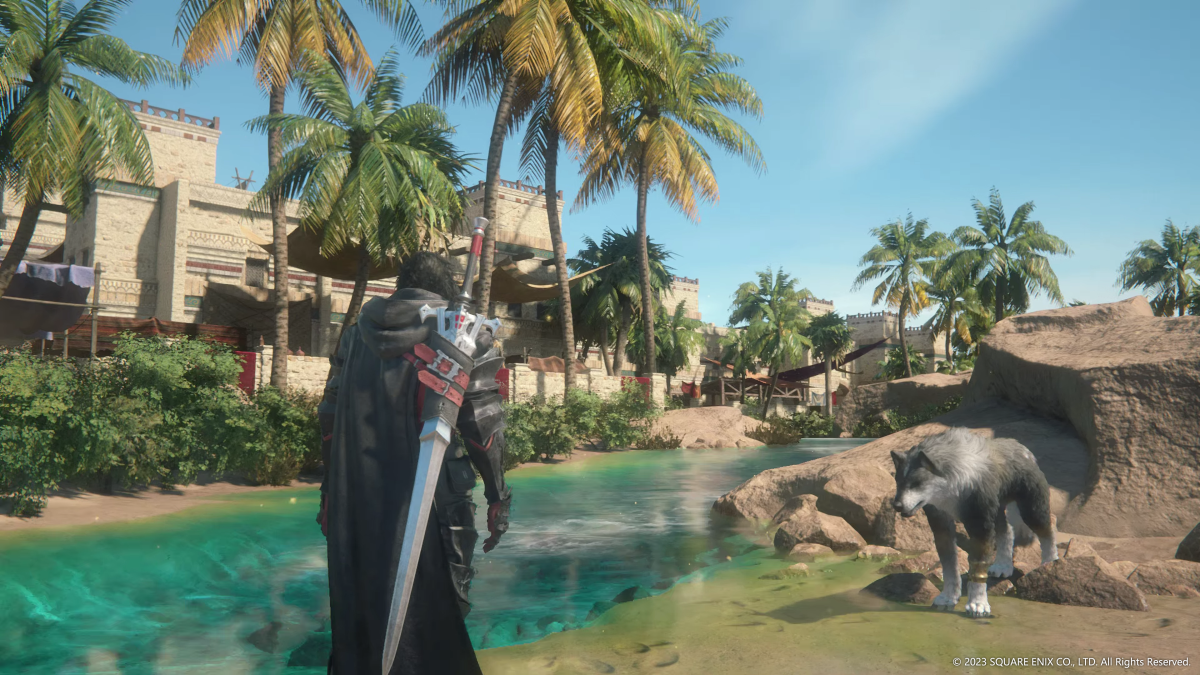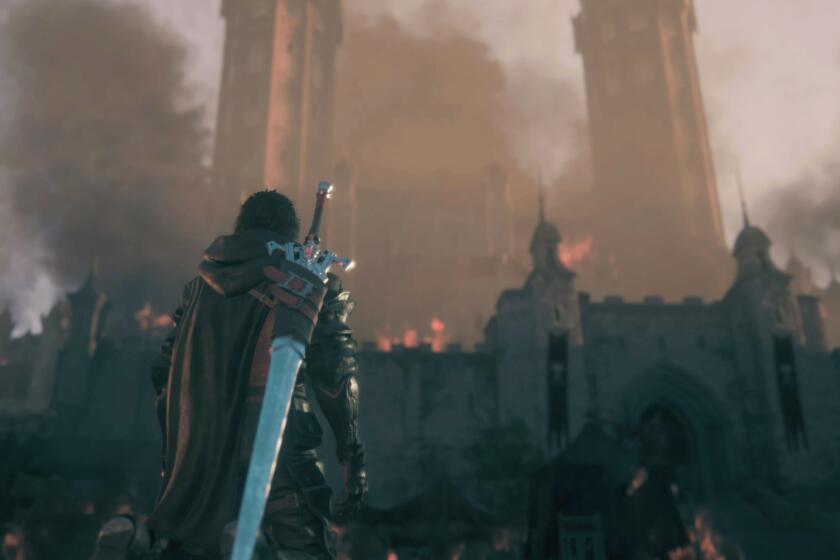‘Final Fantasy XVI’ never breaks immersion with its seamless cutscene-to-action gameplay

- Share via
In the latest not-so-”Final Fantasy,” protagonist Clive Rosfield — a skilled swordsman, son of an archduke and protector of his more favored younger brother — battles a dark fantasy medieval world filled with betrayal, tyranny, giant creatures and magic, with a lovable wolf companion oftentimes fighting by his side.
The lore of “Final Fantasy XVI” is expectedly unique and not related to any series predecessors. There are, however, references to past games that fans would notice.
Fans of 2016’s “Final Fantasy XV” will certainly recall Prince Noctis and his team’s friendly Chocobo mounts, as well as Lady Lunafreya’s message-sending dog, Umbra. But the mood in FFXVI is far more serious — you’re no longer road-tripping with your favorite allies in a car with snacks and supplies.
Seamless transitions and gameplay
“Final Fantasy XVI” introduces some changes. Crystals (used for protection in FFXV) are now meant to be broken. A docile messenger dog is reimagined (Torgal) as a beast of an ally in battle. And the giant summons themselves (Eikons controlled by their respective human hosts) are no longer just special attacks that appear and promptly disappear — but controllable entities with their own moves and battles.
Its fluid and active gameplay mechanics will likely be met with both praise and disdain from newcomers and loyalists who’ve followed the series since 1987, from when it started off as strictly turn-based then progressively phased out all non-real-time mechanics entirely. (The most recent FFXV only had it as an option in the settings, whereas it’s removed entirely in FFXVI.)

In this case, prioritizing a seamless experience to avoid breaking the cutscene-to-gameplay immersion was a main goal of the story direction, says director and producer, Naoki Yoshida.
There’s undoubtedly something to be admired by any game producer who takes risks with their fan base even after massive success. (Yoshida also produced FFXIV, a critically acclaimed MMORPG, or massively multiplayer online role-playing game. ) And I may stand alone as a critic when I judge a product by its creators’ advertised vision and how fluidly (and bug-free) it executes it.
Before you buy
If cutscenes are the bane of your existence, and you love pummeling each final boss through the end credits without knowing who they are or why — this may not be the game for you.
As you would expect from any “Final Fantasy” game, the impassioned voice acting, emotional musical score and overall movie-like storytelling are baked into the crust of the player experience — just as much as the action gameplay itself. The linear structure (there is free roam in some areas) is somewhat the antithesis of a game with superfluous conversations that give some sense of purpose in slaying a set number of bosses.
And as for difficulty, there are points where it can be challenging, but there are options (easy mode) available for those wanting to reach the end credits without needing the controller-handling dexterity of the average SoulsBorne fan.
I do rate this worth buying, particularly if you are a fan of dark fantasy, medieval setting lore and RPGs with an almost overwhelming amount of skill-tree upgrades available. And it’s an experience to be enjoyed by both regular players and backseat gamers alike.
More to Read
The biggest entertainment stories
Get our big stories about Hollywood, film, television, music, arts, culture and more right in your inbox as soon as they publish.
You may occasionally receive promotional content from the Los Angeles Times.












